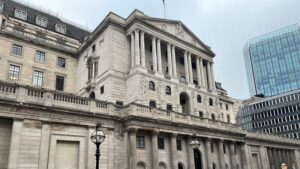With the backdrop of the eurozone troubles and wider macroeconomic turmoil ever more real, the role of infrastructure investment in the UK as both a key economic driver and a source of interesting investment opportunities will continue to be a focus, and rightly so.
Government focus
Whatever the macroeconomic outcome and whichever way you look at it, what seems very clear is that going forward, the UK government and governments around the world are focusing on delivering additional infrastructure assets as a way of stimulating their economies.
The private sector will play a significant role in the funding and successful development of the lion’s share of these schemes, which in turn should provide investors with attractive investment opportunities for years to come.
It’s safe to say that until recently, ordinary people in the street were unable to gain direct access to infrastructure opportunities like they can today, through the growth of listed infrastructure investment companies, and it is the long-term public sector-backed revenue characteristics of some infrastructure assets that makes them so popular.
This week’s news may well encourage retail investors to look into the merits of investing in infrastructure and why and how it can be accessed.
Infrastructure has become a sophisticated asset class in its own right and any investor should be aware that infrastructure is a somewhat generic descriptor that can encapsulate a wide range of assets with distinct risk/return profiles.
At the lower end of the risk scale there are schools, healthcare centres and court houses, broadly defined as social infrastructure which has historically shown low correlation to the broader equity markets, compared with most asset classes.
These investments tend to be typified by long-term contracts with public sector bodies offering steady and predictable revenues regardless of the demand for or use made of the asset. Alternatively, those investors with a higher risk appetite can access more private equity style returns from economic infrastructure where the revenue streams are more variable with macroeconomic factors such as demand-based toll roads, airports and ports.
Social benefits
Investors will be pleased to know that there are a number of easy ways to add an element of infrastructure exposure to their portfolio. An investor with a higher risk appetite can invest directly in a construction company with exposure to public works, an operator of an airport or toll road and finally a utility company.
But it is the core characteristics of the lower risk availability-based social infrastructure that has made this area of the market a particularly attractive investment class in the current market environment, attracting a surge of interest from retail, institutional and public and private pension funds.
These assets generally provide long-term, public sector-backed, predictable, partially or wholly inflation-linked income which has prompted some to compare the risks and returns applicable to these assets with those applicable to government bonds. Typically these assets can combine in portfolios to offer an attractive dividend yield with low levels of exposure to changing economic conditions, some element of capital growth and a low correlation to equities and other classes of investment assets.
The London listed infrastructure fund space (which comprises six funds) provides investors access to a diverse pool of largely social-infrastructure assets (PFI/PPP schemes) with each fund having slightly different risk weightings and return potential, dependent in part on the differing levels of geographic and construction exposure.
These funds have tended to trade at a premium to net asset value, reflecting the strong track record of above average yields (5%+) and their steady share price performance. The growing investor appetite for the funds has seen a number of new market entrants and a number of significant capital raisings during the past two years.







